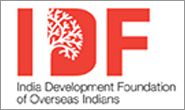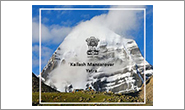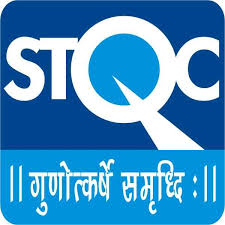Ambassador’s Remarks at the Opening Session of 7th ICWA-CPIFA Dialogue
(15 April 2021)
Ambassador Raghavan,
Mr. Wang Chao,
Ambassador Ou Boqian,
Ambassador Sun Weidong,
Distinguished participants, friends,
I am glad to have this opportunity to share some thoughts at the opening of the 7th ICWA-CPIFA Dialogue. I hope this will be a candid dialogue as I believe that being frank and open helps create understanding and solve problems. Accordingly, your views and exchanges today have an important role in taking us a few steps closer to those goals.
2. The themes of today’s dialogue are indeed timely and thought-provoking. They approach bilateral relations from a broader global perspective, which is important, given the flux and turbulence that the world currently finds itself in. While I do not wish to pre-empt the discussions that will follow, I think it would be useful to take a step back and look at the real context in which our bilateral agenda is unfolding.
3. When we speak of a development agenda, it is useful to remember that as recently as May 2020, which is less than a year ago, seeking a closer developmental partnership for the 21st century had been the keynote of the India-China relationship. As two similarly-situated large countries and ancient civilizations with populations of over a billion, it had seemed self-evident to generations of our leaders that we had much to learn from each other and much to share. Leaders on both sides had spoken publicly of the key roles we had in the making of the Asian Century. While they recognized the inevitable presence of competition in the relationship, they also simultaneously prioritized cooperation and shunned containment, because they believed that containment was neither feasible nor advisable in respect of either country. Of course, they were more than aware of the issue of an unsettled boundary between us, but they worked hard to create a parallel framework for the resolution of the boundary question. In the interim, pending its ultimate resolution, the two countries worked out elaborate mechanisms and parallel structures for border control and for the management of issues that cropped up on the ground on a regular basis. Though they were tested on multiple occasions, these mechanisms and structures helped maintain the all important peace and tranquility on the borders, thereby helping create the environment in which the India-China relationship grew spectacularly between 1988 and 2019. I emphasize this point to underline the fact that the relationship did not grow autonomously but as a result of conscious policy choices that nurtured an environment for its growth.
4. It is tempting today to remember this period with a touch of nostalgia, and to argue that we should shelve our differences and things should immediately go back to the way they used to be. But we must acknowledge that these enabling structures and the fundamental premise of the closer developmental partnership have been placed under considerable strain by the serious incidents and the resultant violation of peace and tranquility at the Line of Actual Control in Eastern Ladakh in April 2020 and thereafter. The impact on public opinion has been particularly strong. In this context, it has often been pointed out by friends in China that we should stick to the consensus between our leaders. I have absolutely no quarrel with that. Indeed, I agree wholeheartedly. At the same time, I should point out that equally significant consensus has been reached between our leaders in the past as well, for instance the consensus that I just referred to on the importance of maintaining peace and tranquility, and it is important to stick to that consensus as well. We have also seen a tendency in some quarters to sweep this situation under the carpet and characterize it as just a minor issue and a matter of perspective. This too is inadvisable as it can only take us further away from a sustained solution to present difficulties and deeper into an unfulfilling stalemate. In fact, it would be tantamount to running away from the problem and in a direction opposite to that where the promise of our closer development partnership lies.
5. What then can be the sustainable solution to these present difficulties in the relationship? It must be one, as External Affairs Minister Dr. Jaishankar has suggested, that is based on mutual sensitivity and respect and paves the way for maximizing our mutual interests. Today’s dialogue is neither the appropriate occasion nor the appropriate forum for me to delve into the details of the ongoing discussions beteen the two sides. However, I do wish to make two brief points; the first is to note the importance of the two sides having maintained a sustained diplomatic and military dialogue in attempting to resolve issues. These discussions thus far have helped in achieving substantial disengagement of our forces. The second is to point out that senior leaders on both sides have committed and agreed that we must achieve complete disengagement in all friction areas. That would be an important first step towards considering de-escalation; it would also help in restoring peace and tranquility and, together, these would provide conditions for gradual and step-by-step progress in the bilateral relationship. This is also what would begin to restore trust and confidence in the relationship and help us rebuild the foundation of the relationship that was damaged through last year’s actions in Eastern Ladakh.
6. At the same time, we must also recognize that our bilateral interactions are taking place within an international context. The world as we know it was already changing before the pandemic; that change has accelerated now and we are presented with an international reality that is more dynamic, digitized, and disrupted than ever before. This is a world where the struggle for influence and relevance is creating space for asymmetric and niche capabilities, which can be just as useful as conventional ones and can have implications for long-standing power structures. In many ways, this is also a world in which both India and China are particularly well-situated because of our respective capabilities, capacities and traditions of innovation. I feel that both our countries should bring these to bear in confronting contemporary challenges. One just needs to look at the strengths both of us have cultivated over the previous decades that are proving useful in the current one, such as engineering and manufacturing in China’s case and vaccine production and IT in India’s case.
7. Beyond these specific capabilities, we have also long been vocal in our support on the world stage of an inclusive order and the values of multilateralism. However, if we wish to cope effectively with the challenges of the evolving international scene, it is clear that only statements in favor of multilateralism will not be sufficient. We must remember in any case that multilateral structures are presently under some stress and have therefore created space for a number of plurilateral initiatives, which essentially represent efforts by groups of interested actors who share common objectives and believe they can jointly deploy their resources for the achievement of those objectives. Examples of such initiatives can be found in all corners of the world and it is important to afford space to them rather than prejudge them.
8. At the same time, it is also important to recognize that in a post-pandemic world of altered equations, multipolarity is probably more important than ever, both in the Indo-Pacific and beyond. In a multipolar world, no country can set the agenda by itself without prior agreement and consultation, and then expect everyone else to come on board. No single country can expect a discussion to focus only on issues of its own interest while ignoring those raised or reflected by others. And no country should imagine that it has sole control over the narrative about a relationship or its actual course. The sooner this is understood, the sooner we can move towards a real and reformed multilateralism. And it goes without saying that, no matter the domain, multilateral, plurilateral or bilateral, words are important but they also need to be backed up by actions. So we will certainly be listening to the words, but more importantly, we will also be watching out for the actions.
9. I would like to conclude with an observation related to the significance of the current juncture in the evolution of our two countries. Important anniversaries are coming up for both of us - the 100th anniversary of the founding of the CPC in China this year, and the 75th anniversary of India’s independence next year. Our countries have embarked along their respective paths of development and have dedicated themselves to seeking prosperity for their citizens. Both are now situated at a unique juncture in world history as well as bilateral relations. Both will be taking stock in the coming weeks and months of their own achievements and of their respective places in the world thus far, in addition to making plans for the next few decades. We both have much to be proud of, just as we both are conscious of the significant challenges that still confront us. Everyone should be able to agree that the space and time needed for meeting these challenges will be created by respecting existing commitments that have long contributed to preserving peace on our peripheries. Restoring peace and tranquility on the borders will therefore not only enable us to seek progress in bilateral relations but, equally importantly, also enable us to deliver concrete benefits to our own people and aid their material progress and development. I believe that this is the essence of the guiding thought behind China’s 14th Five Year Plan and the Long Term Vision for 2035 crafted under President Xi Jinping’s leadership. It is also the driving force behind Prime Minister Modi’s vision of an Atmanirbhar Bharat. The path to this more desirable vista is already clear; we now need sincerity and resolve in walking down it.
10. Thank you once again for inviting me to speak and I wish you all a very productive afternoon.
***





























